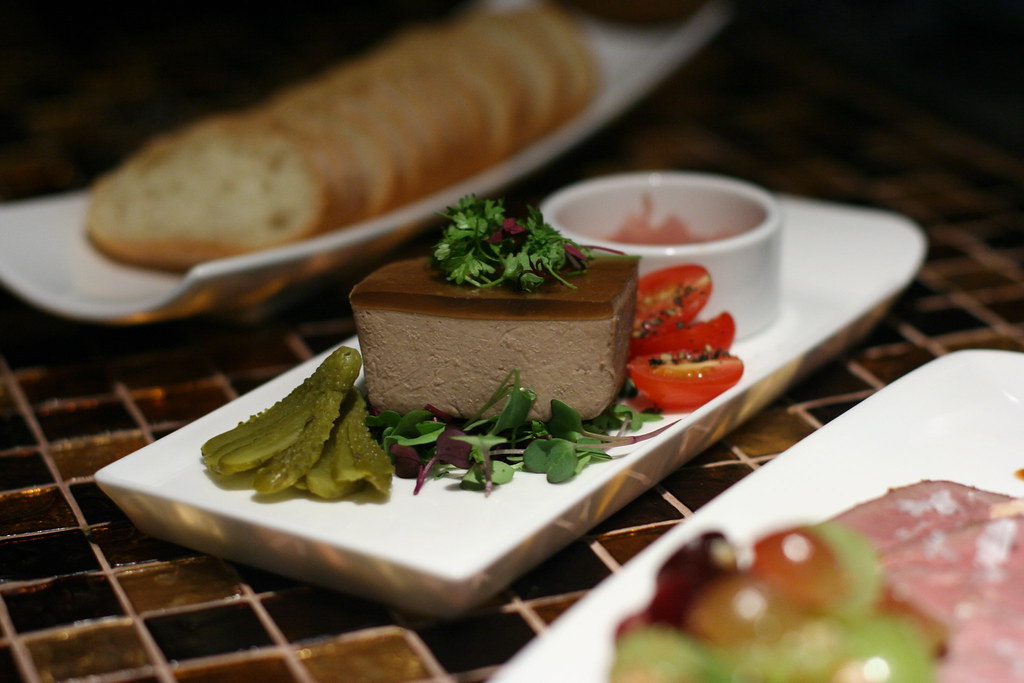How to make liver pâté is one of the most popular questions from our readers and, it seems to us, one of the easiest tasks a cook can face. It’s delicious, it’s easy, it’s quick. The main thing is not to get distracted.
Of course, there are not only a great many very complicated recipes for pate, but also a few simple ones. In addition, in Russian cuisine the word “pâté” refers to two dishes – terrine and paté, while in French cuisine pâté is a pâté with a filling of ground giblets and meat, and it is not customary to eat the bread crust of such a pâté.
When terrine is made, the liver and associated products are first mashed and then baked in a mould (sometimes interspersed with layers of ham or other meats and poultry). In the case of paté, the mashed liver is not baked, but whipped to the consistency of ice cream with the addition of cream and/or butter; the paté mass can then be rolled up, layered with the same butter, for example.
Anyway, the flavour profile of liver pâté basically consists of three flavours: blood, fat and caramel. The blood flavour comes from the liver, which is the main blood-producing organ in any organism. The flavour of the fat is provided by butter, or cream, or bacon, or bone marrow – you can choose one of these ingredients or all at once.
In French practice, it is customary, among other things, to cover the bacon mould in which the pâté (more precisely, the terrine) is then baked; the remains of the bacon are then removed from the finished pâté and discarded. The terrine, on the other hand, comes from properly roasted vegetables – onions, carrots, leeks, turnips, root celery and whatever else you see fit to add. Personally, I prefer the simplest – so much so that there’s not even much to describe. And yes, it’s pate.
Layout of the products for the pâté. Chicken liver, onion, carrot, butter, salt and freshly ground black pepper, fresh thyme, 20% cream, chicken stock, something like whisky, sherry or port
Ingredients and technique
A supermarket packet of chicken liver usually weighs 500 grams. In my opinion, this kind of liver is the easiest to process, as it needs neither to remove the foil, nor to remove the bile ducts (although you can’t say that there is absolutely nothing to throw away). It is enough to wash it, dry it with a paper towel, cut each liver into two or three pieces and put it in a big pan with a thick bottom. There is no need to fry it, because frying will have no effect on the taste of blood, at best, but a bad effect at worst.
Begin preparing the liver pâté. Cut each liver into two or three pieces
For this amount of liver you need at least one large white onion and one large carrot. Peel them, cut into pieces the size of a grain of rice. Melt a piece of butter in a medium sized frying pan, about 25-30 grams, add the onions and carrots – and cook over a medium heat until the onions are translucent, stirring and not even slightly darkened. Only soft, no browning. When the vegetables are soft, transfer them to a plate and allow to cool to room temperature.
Sliced vegetables (about the size of a grain of rice) are sautéed in butter until soft, without browning.
Of course, you can go beyond one onion. Take a second and even a third, for example, and fry them in the same manner – the more onions, the sweeter they will be. Increasing the amount of carrots, in my opinion, is not a good idea as it will affect the overall appearance, not the taste, and not in the best way.
Add fried onions and carrots to the liver in the pot and season lightly with salt and pepper. You can also add some herbs – I usually peel the leaves off two or three sprigs of fresh thyme, lightly grind them in the palm of my hand and add them to the liver.
Fresh thyme sounds great in the liver pâté
Then pour in approximately 100 ml cream and 100 ml chicken stock. Put the pan over a medium heat. Bring to the boil, cover, cook for another 5 minutes and then turn off the heat.
The pot with the liver has the cream already infused and we pour in the broth
When the contents of the pan has cooled to room temperature, chop it – using an immersion blender (this is better because it is more convenient) or in the bowl of a regular blender.
Put the ready mixture into the blender jug.
Then add 50 grams (or a little more) of melted butter to the pâté and mix until smooth.
Add butter to the chopped mass
Now taste the pâté – whether it has enough salt and pepper and whether you need to add any other spices or, say, alcohol. If you leave the pâté as it is, it is quite possible and even necessary to give it to children – because there is one solid benefit, and in this tender form, children will consume this benefit and even get nervous before they have time to get nervous.
Spread the cooked liver pâté into forms that are suitable for storing in the fridge
If the pâté is intended for adults, spice it up gently and carefully, adding spices by the pinch and alcohol by the teaspoonful. As for the specific type of alcohol, in my opinion, beverages that have been matured in casks are good for pâté: brandy, sherry, port and whisky. Some tinctures can also be used, but wisely and tastefully.
What variations of liver pâté can be made
In addition to liver, some chicken fillet can be added to the base of the pâté. Cut it into the same pieces as the liver and put it together in the pan. For 500 grams of liver, 1 chicken breast fillet is sufficient. Fresh mushrooms are excellent in the pâté. Mushrooms, shiitakes and white mushrooms (white is best) will do. It is best to first lightly fry them, finely chop them and add them to the ready-made pâté.
Layout of the additional ingredients for the liver pâté. C/smoked brisket/bacon, fresh mushrooms (mushrooms are also possible), chicken breast
It’s a rich idea to change the composition of the fat for frying vegetables. Add some thinly sliced smoked breast to the butter, after 3-4 minutes of frying remove the greaves which have formed and add the vegetables. Only you don’t need to put the greaves in the pâté; you can eat them just like that.

